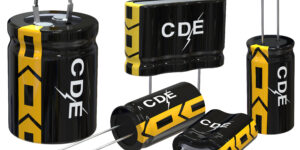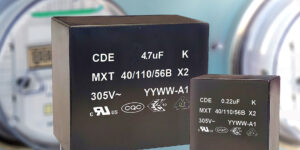MICA CHIP
As the inventor of the mica capacitor, we are the world’s foremost authority and largest manufacturer of mica dielectric capacitors.
As the inventor of the mica capacitor, we are the world’s foremost authority and largest manufacturer of mica dielectric capacitors. Our RF mica capacitors feature superior high Q performance without the undesirable properties associated with ceramic and porcelain capacitors. Rugged flexibility and compatibility with FR4 boards make Type MC and MCN capacitors ideal for use where other multilayer caps aren’t recommended because of cracking. Nonmagnetic Type MCN chips are available for MRI and other high frequency applications that often use more expensive porcelain ceramic chips.
Highlights
- Extremely high Q at UHF/VHF frequencies
- Free from thermal cracking, FR4 compatible
- Wave solderable
- Nonmagnetic option
- Available up to 4,000 Vdc
- Exceed 2 mm bend test
- High RF current — dV/dt 20,000 V/µs
- Rock stable: No change with time, V & f

Applications Include:
MRI Coils and Generators, RF Instruments, Power Amplifiers, Tuned LCR Circuits, CATV, Ground and Flight Mobile Radio, Lasers, Software - Defined Frequency-Hopping Radio, Military, Aerospace, Medical Applications, Antenna Tuning, Transmitters
Find a Rep Find a Distributor
New Products
-
Released Aug, 2024
Type QAS, Arc Suppressor/Snubber Network
Type QAS will extend the operating life of electronic and electro-mechanical devices by reducing and/or eliminating the electrical arcing, noise, and EMF. These electrical conditions often cause early failures in relays, switch contacts, and solid-state components such as SCRs and TRIACs.
-
Released Mar, 2024
3 CELL DSF & DGH
Three-cell devices offer greater energy potential and power output than single or dual-cell parts in standard PCB layouts
3-cell DSF & DGH capacitors provide very fast power discharge that cannot be matched by conventional capacitors or batteries. That large capacity makes it possible to support brief power interruptions, supplement batteries, or even be used in place of batteries in many applications.
-
Released Nov, 2023
TYPE MXT, X2, EMI/RFI Suppression Capacitors, Harsh Environment
Type MXT Series Metallized Polypropylene Film Capacitor, designed to suppress conducted electromagnetic/radio frequency interference (EMI/RFI) at a circuit’s power input. These capacitors are perfect for use in harsh environments having met the demanding 85/85 THB (Temperature, Humidity, Bias) test requirements. Class X2 capacitors, like the MXT, are typically connected across the AC input to prevent interference from spreading through power lines or other devices on the same circuit.




